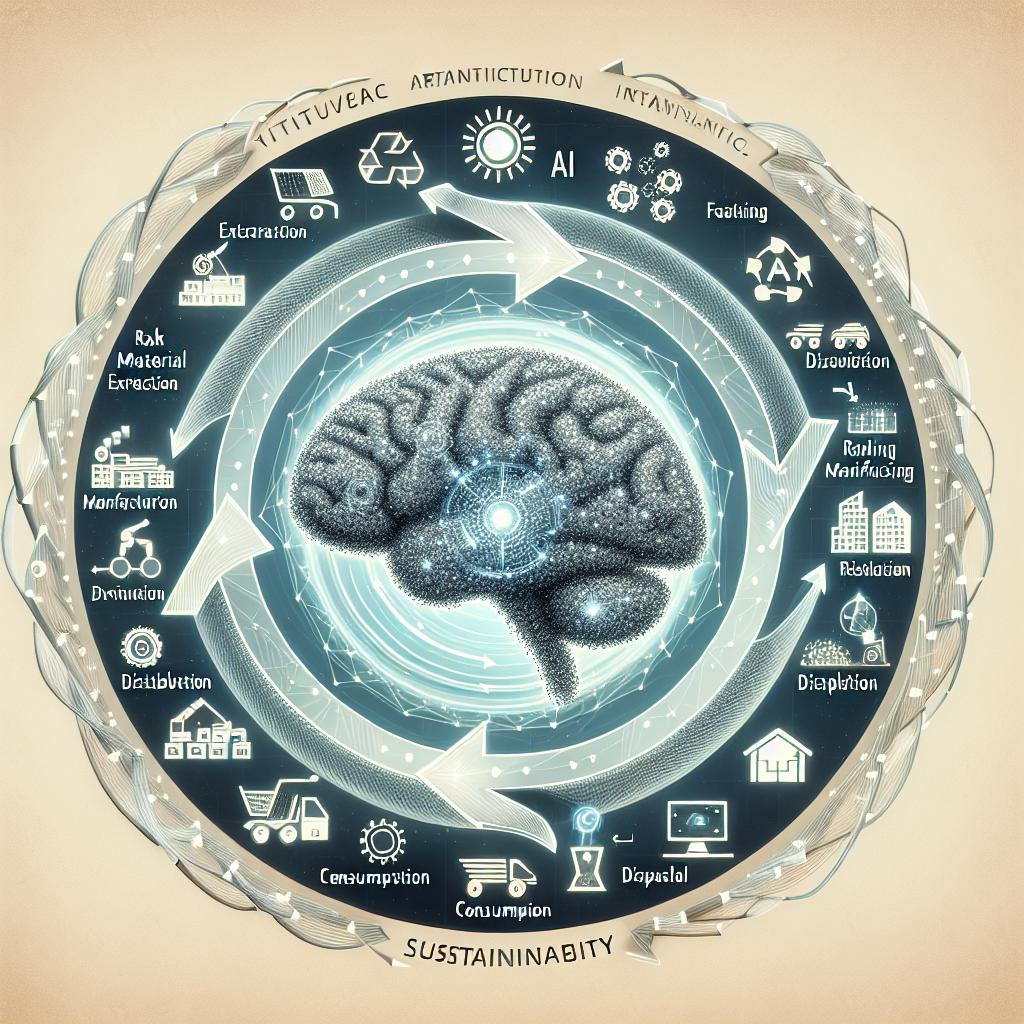The Circular Economy: A Vision for AI-driven Sustainability
Introduction
In recent years, there has been a growing recognition of the need to move towards a more sustainable model of economic development. The circular economy is a concept that offers a promising vision for achieving this goal. By shifting from a linear model of production and consumption to one that is based on reuse, repair, and recycling, the circular economy aims to reduce waste, conserve resources, and minimize environmental impact.
At the same time, advances in artificial intelligence (AI) are opening up new possibilities for driving sustainability across various industries. AI technologies have the potential to optimize resource use, improve energy efficiency, and enable more efficient waste management processes. By combining the principles of the circular economy with AI-driven solutions, businesses and governments can work towards a more sustainable future.
What is the Circular Economy?
The circular economy is a regenerative economic system in which resources are kept in use for as long as possible, with the aim of minimizing waste and maximizing the value of resources. In a circular economy, products are designed to be easily disassembled and recycled, and materials are reused or repurposed rather than being disposed of.
This shift from a linear model of production and consumption, in which resources are extracted, used, and then discarded, to a circular model represents a fundamental change in the way we approach economic activity. By closing the loop on material flows and reducing reliance on finite resources, the circular economy offers a more sustainable alternative to the current linear system.
What is AI-driven Sustainability?
AI-driven sustainability refers to the use of artificial intelligence technologies to drive more sustainable practices and outcomes. AI can be applied across various industries and sectors to optimize resource use, reduce waste, and improve environmental performance. By analyzing large datasets, identifying patterns, and making predictions, AI can help businesses and governments make more informed decisions that support sustainability goals.
AI-driven sustainability encompasses a wide range of applications, from energy management and transportation to agriculture and waste management. For example, AI-powered sensors can monitor energy consumption in buildings and adjust settings to optimize efficiency. In agriculture, AI algorithms can analyze soil conditions and weather patterns to optimize crop yields and reduce water usage. In waste management, AI can help identify opportunities for recycling and reuse, as well as improve sorting and processing of materials.
Combining the Circular Economy with AI-driven Solutions
The circular economy and AI-driven sustainability are two complementary approaches that can work together to create a more sustainable future. By integrating AI technologies into circular economy practices, businesses and governments can unlock new opportunities for resource conservation, waste reduction, and environmental protection.
One key area where AI can support the circular economy is in the design of products and materials. By using AI algorithms to analyze data on material properties, product lifecycle impacts, and consumer preferences, designers can create products that are more durable, repairable, and recyclable. AI can also help optimize supply chain processes, enabling more efficient use of resources and reducing waste along the entire production and distribution chain.
In the area of waste management, AI-powered technologies can help improve sorting and processing of materials, making it easier to recover valuable resources from waste streams. AI algorithms can also identify opportunities for reuse and recycling, helping to close the loop on material flows and reduce the amount of waste that ends up in landfills or incinerators.
In the energy sector, AI can play a key role in optimizing energy use and reducing carbon emissions. By analyzing data on energy consumption patterns, weather conditions, and grid performance, AI systems can help businesses and utilities maximize energy efficiency, integrate renewable energy sources, and reduce overall energy consumption.
FAQs
Q: How can AI help businesses transition to a circular economy model?
A: AI technologies can support businesses in designing products that are more sustainable, optimizing supply chain processes, and improving waste management practices. By analyzing data and identifying opportunities for resource conservation, AI can help businesses make more informed decisions that support the transition to a circular economy model.
Q: What are some examples of AI-driven sustainability initiatives?
A: Examples of AI-driven sustainability initiatives include smart energy management systems that optimize energy use in buildings, AI-powered sensors that monitor air and water quality, and AI algorithms that optimize crop yields in agriculture. These initiatives demonstrate the potential of AI to drive more sustainable practices across various industries.
Q: How can governments support the adoption of AI-driven sustainability practices?
A: Governments can support the adoption of AI-driven sustainability practices by investing in research and development, providing incentives for businesses to adopt sustainable technologies, and setting regulatory frameworks that encourage sustainable practices. By working with businesses and other stakeholders, governments can help drive the transition to a more sustainable economy.
Conclusion
The circular economy offers a promising vision for achieving a more sustainable future, while AI technologies have the potential to drive more sustainable practices across various industries. By combining the principles of the circular economy with AI-driven solutions, businesses and governments can work towards a more sustainable and prosperous future for all.
As we continue to face environmental challenges such as climate change, resource depletion, and pollution, it is essential that we embrace innovative solutions that can help us transition to a more sustainable model of economic development. The circular economy and AI-driven sustainability offer a powerful combination of tools and strategies that can help us build a more resilient and regenerative economy for future generations. By working together to implement these solutions, we can create a world that is more prosperous, equitable, and sustainable for all.

